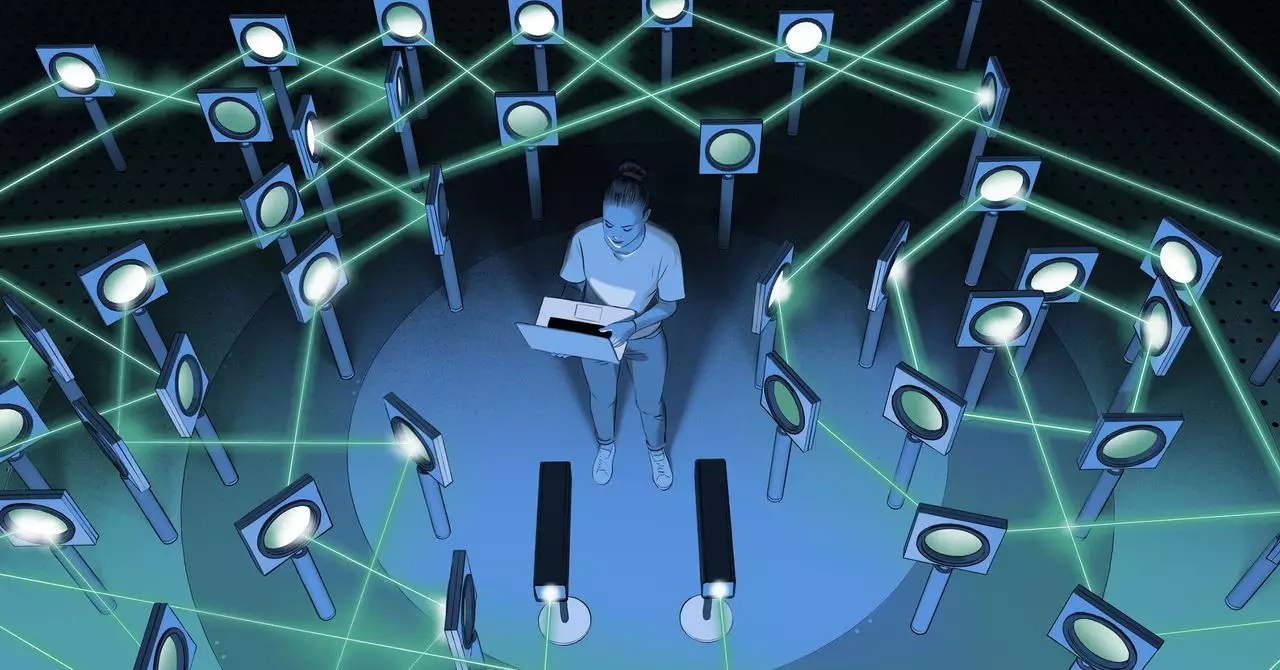The realm of physics, long considered the bastion of meticulous human ingenuity, is now experiencing a transformative wave driven by artificial intelligence. While traditional experiments—such as those conducted at LIGO or the Large Hadron Collider—have been the pinnacle of scientific achievement for decades, AI is beginning to challenge the notion that these monumental discoveries are solely the domain of human intellect. Instead, AI offers a new collaborative frontier, one where it acts as both assistant and innovator in unraveling the universe’s deepest mysteries.
The conventional wisdom held that only the most seasoned scientists could deduce the intricate symmetries or formulate equations describing dark matter or gravitational waves. However, AI algorithms are quickly proving that they can detect subtle patterns far beyond human cognition, serving as a catalyst for future breakthroughs. For example, AI’s ability to analyze complex datasets generated by colossal physics experiments enables it to identify symmetries in particle behaviors—reminding us of Einstein’s profound insights—yet done in a fraction of the time and with unprecedented precision.
While some skeptics dismiss AI’s contributions as mere pattern recognition, its role as a conceptual aid should not be underestimated. These tools are not just automating tedious tasks but are actively exploring the landscape of possibilities that might be invisible to human perception. They generate hypotheses, suggest novel experimental configurations, and—even more astonishingly—demonstrate configurations that humans might overlook or dismiss as irrelevant, fortifying the argument that AI is an intellectual partner in modern scientific pursuits.
Quantum Entanglement and the Edge of the Unknown
At the core of cutting-edge physics lies quantum mechanics—an arena where conventional intuition fails spectacularly. The phenomenon of entanglement, where particles share a quantum state regardless of distance, epitomizes this strangeness. For years, physicists believed that entanglement required initial interaction—until pioneers like Anton Zeilinger flipped this assumption. His experiments proved that quantum particles could become entangled through processes like entanglement swapping, even if they had no prior contact.
This revelation didn’t just deepen our understanding of quantum physics; it opened the door to revolutionary applications like quantum teleportation and secure communication. The complexity of these experiments often necessitates sophisticated modeling and precise design—areas where AI has proven invaluable. Researchers, such as the team led by Krenn, now utilize advanced algorithms and software like PyTheus, which models optical experiments using graph theory. This approach simplifies the design process, transforming abstract experimental components into manageable mathematical structures, thus hastening the development of quantum technologies.
However, the implications go well beyond experimentation. AI-driven models allow scientists to simulate countless configurations rapidly, testing the limits of what is feasible in quantum entanglement. This iterative process accelerates discovery and steadily pushes the boundaries of quantum mechanics, making phenomena once considered purely theoretical now achievable in laboratory settings.
AI as a Catalyst for Scientific Paradigm Shifts
The transformative impact of AI is not merely in automating repetitive analysis but in fundamentally reshaping how research is conducted. Its capacity to generate unexpected insights fundamentally challenges the traditional approach—one that heavily relied on intuition and incremental hypotheses. Instead, AI introduces an era of “exploratory science,” where experimentation is guided by data-driven suggestions that may seem counterintuitive to human reason.
Consider the example of discovering new equations to describe dark matter’s behavior—a mysterious substance constituting most of the universe’s mass. AI’s capacity to sift through astronomical datasets, identify hidden patterns, and propose candidate models accelerates the discovery process exponentially. Humans, no matter how skilled, are limited by cognitive constraints; AI can process vast, multidimensional data spaces beyond human reach.
Yet, this power comes with accountability. Relying on AI-generated solutions requires careful validation; as intelligent as these tools are, they are still limited by the quality of data fed into them and by the assumptions embedded within their algorithms. Therefore, the future of physics hinges on an intricate collaboration: human insight to interpret, validate, and refine AI’s suggestions, rather than surrendering entirely to algorithmic outputs.
In this light, AI is not just a tool but a potential catalyst for paradigm shifts. It encourages scientists to revisit foundational theories, question long-held assumptions, and explore uncharted territories of physics with renewed vigor and an expanded toolkit. As AI systems become more sophisticated, it’s conceivable that they will not only assist in making discoveries but will also influence the very questions scientists seek to answer, guiding us toward a deeper, more comprehensive understanding of the cosmos.

